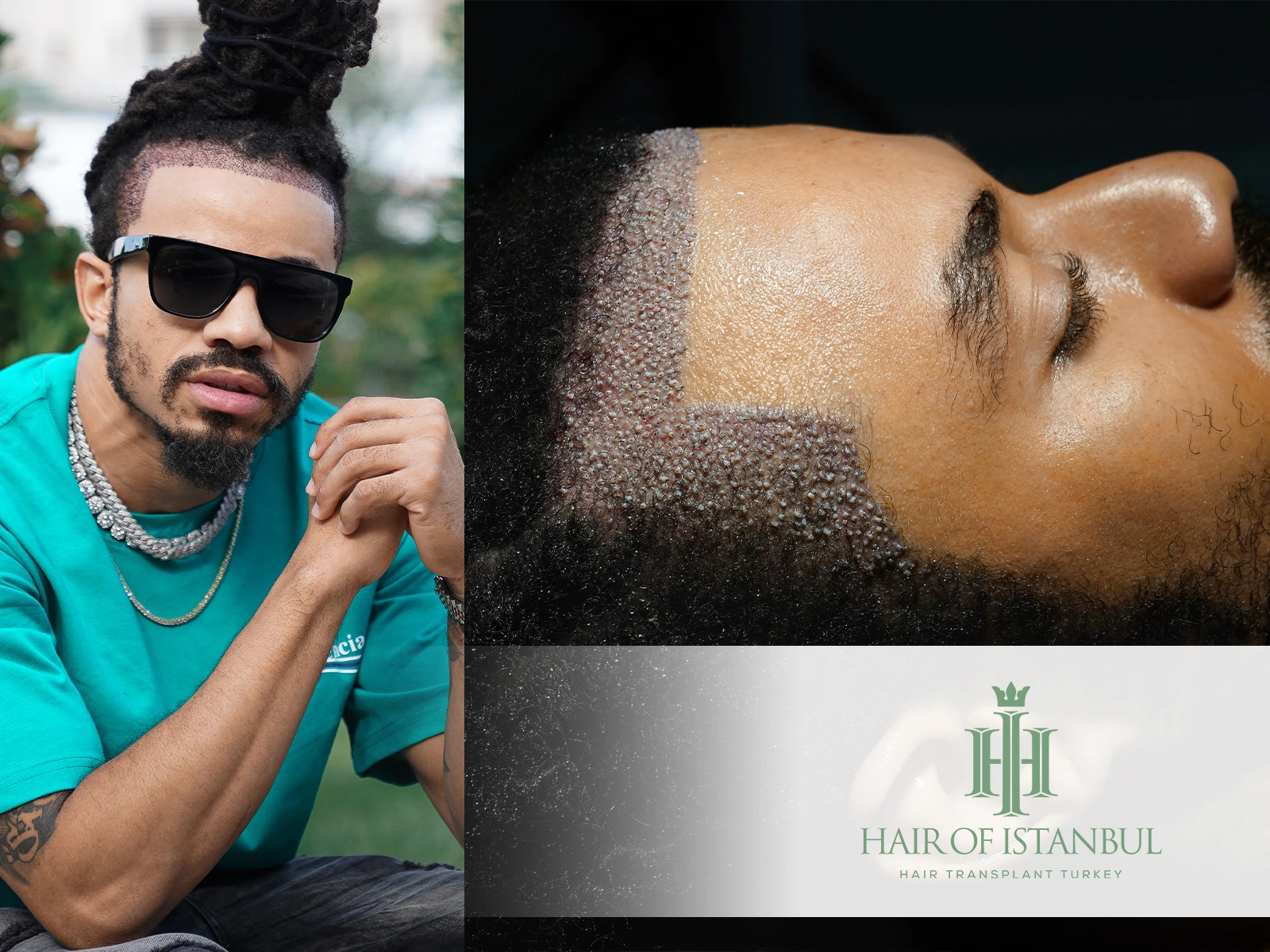
Without Shaving Hair Transplant
SUMMARY : Hair Transplant Without Shaving , is the umbrella term for techniques in which the target follicle is either individually pre-trimmed or extracted without any trimming; a long-hair FUE variant also exists.Selected cases are chosen; because the procedure is more labor-intensive and longer, a higher fee is often charged.
Candidate selection requires a stable pattern, sufficient donor density, and realistic expectations .Avoid overharvesting in the donor; single-session densities above 10–15 grafts/cm² are risky.Advantages: It preserves the day-to-day appearance and enables a quick social return; Limitations: Longer duration, transection risk may increase, and efficiency may drop in large areas.
What is Without Shaving Hair Transplant?
Hair Transplant Without Shaving means performing FUE without shaving: without fully shaving the donor and/or recipient areas, target grafts are selected one by one, extracted, and implanted. The ISHRS defines unshaven FUE as extracting the target graft by either individually shortening it (pre-trimmed) or not shortening it at all (direct), and emphasizes that long hair should not be cut inside the punch, otherwise the risk of transection may increase.
This approach began appearing in publications in the mid-2010s; while Park and colleagues reported the feasibility of both pre-trimmed and direct NS-FUE techniques, they noted that although the direct method is faster, it tends to produce grafts with shorter hair shafts.
Method types: Pre-Trimmed, Direct Non-Shaven, Long-Hair FUE
- Pre-trimmed NS-FUE: The surgeon micro-trims a few hairs of each follicle to be taken, then extracts with a punch. It is controlled; target selection is clear.
- Direct NS-FUE: Extraction with the punch without any pre-trimming; despite the speed advantage, the risk of undesirable subdermal hair-shaft cutting (transection) may increase—requires experience.
- Long-hair FUE: The long hair shaft of the extracted grafts is preserved; with the “preview” effect, early visual assessment is possible. Current forums/literature examine pros-cons and use in challenging types such as curly hair.
Who Is Unshaven Hair Transplant Suitable For?
Suitable candidate profile:
- Hair Transplant Without Shaving Stable pattern (male-type/female-type), healthy scalp, adequate donor, and realistic expectation. (General hair transplant candidacy criteria.)
- Hair Transplant Without Shaving Professionals who wish to maintain their appearance, female patients, and limited areas targeting regional density increase (e.g., hairline or crown).
Potentially unsuitable situations:
- Large area requirement (in very extensive baldness, the unshaven approach may be inefficient in terms of time/output).
- Conditions that impair donor reliability such as DUPA (diffuse unpatterned alopecia); active scarring alopecias (LPP/FFA/DLE) may be contraindications for surgery.
Cost & procedure time: The ISHRS notes that non-shaved FUE is more labor-intensive and longer; therefore it is billed higher in many clinics.
Planning & Donor Sustainability
Hair Transplant Without Shaving the physics of FUE do not change: do not go beyond the safe donor area, ensure uniform distribution, and avoid overharvesting. ISHRS FUE Guidelines recommend avoiding single-session densities above 10–15 grafts/cm²; otherwise the risk of visible thinning and overharvesting increases. The plan must be personalized according to donor FU density and hair thickness.
Procedure Steps
- Planning & design: Hairline, density targets, graft count.
- Donor preparation: In an unshaven scenario, graft-focused targeting; decide on pre-trim or direct technique.
- Graft harvesting (FUE): Appropriate punch diameter/depth; keep transection low (risk management with long hair).
- Placement via channels/sites or with an implanter.
- Placement principles: Single grafts in the frontal hairline, multiples behind; angle-direction-density should match the natural pattern. The general FUE patient information framework is summarized by the AAD.
Unshaven Hair Transplant Advantages and Limitations
Advantages
- Hair Transplant Without Shaving Daily appearance is preserved; return to social life is rapid.
- With long-hair FUE, early “preview” assessment is possible.
Limitations
- Hair Transplant Without Shaving The operation is longer and more labor-intensive; more expensive in most centers.
- Technical difficulty: Working without trimming may increase the risk of transection; experience is essential
- May be inefficient for large areas; a staged plan is often needed. (General clinical approach + candidacy criteria.)
Recovery and Aftercare
- Days 0–14: Crusts typically shed between days 7–14; no picking/scratching in the first week, gentle washing protocol. (General patient information framework.)
- Months 3–6: New growth begins;
- Months 9–12: Cosmetic outcome matures. (General hair transplant timeline.)
Note: Since individual hair loss may continue, your surgeon may recommend medical therapy (e.g., minoxidil / 5-ARI in selected cases) to support long-term sustainability of results, if appropriate. (Patient information resources.) (American Academy of Dermatology)
Frequently Asked Questions
“ Hair Transplant Without Shaving ” is it suitable for everyone?
No. It is more suitable for patients with a stable pattern, adequate donor, and realistic expectations who aim to increase density in a limited area. In very large bald areas and in patients with high expectations, a shaven approach may be more efficient.
Why might Unshaven FUE be more expensive?
Because the procedure is longer and more labor-intensive, pricing is higher in many centers.
In Long-hair FUE, “will I see results immediately”?
An early preview is possible thanks to the preserved long hair shaft; however, the final result matures at 9–12 months.
Does working unshaven affect graft integrity?
Technical difficulty increases; due to transection risk and logistical complexity, it should be performed by experienced hands.
References
- ISHRS — FUE Clinical Practice Guidelines (2019). Safe donor, density, and overharvesting cautions.
- AAD — Hair transplant (patient guidance). General process, core principles of modern FUE.
- ISHRS — Shaven vs Unshaven Terminology. Definition of unshaven FUE, warnings about transection risk.
- Park JH. Pretrimmed vs Direct Non-Shaven FUE — Feasibility of both methods, speed/differences.
- HT Forum (2025). Preview Long Hair FUE: Pros & Cons. Preview concept and current technical discussions.
- StatPearls (2024). Hair Transplantation. Candidacy and general recovery framework. NCBI
This text is for general information purposes. Diagnosis, treatment, and surgical suitability are determined through individual examination, trichoscopic measurements, and physician evaluation.
 en
en  TR
TR  SK
SK  ITA
ITA  FR
FR  DE
DE  ES
ES  BG
BG 